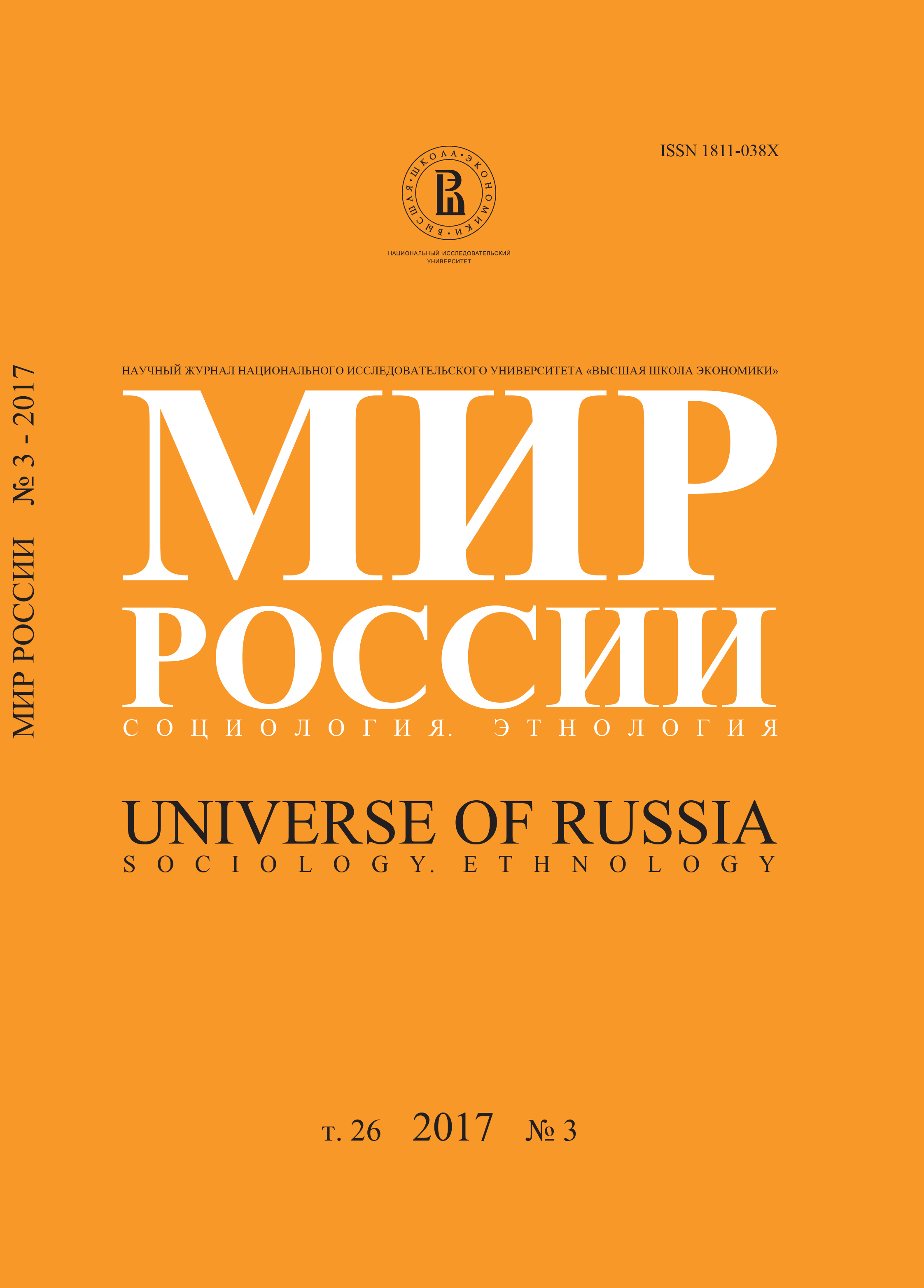The Human Capital of Russian Workers: The Overall State and Its Specifics
Abstract
Natalia Tikhоnova — Doctor of Science in Sociology, Professor-Researcher, National Research University Higher School of Economics. Address: 20, Myasnitskaya St., Moscow, 101000, Russian Federation. Email: netichon@rambler.ru
Anastasia Karavay — Candidate of Science in Sociology, Senior Researcher, Institute for Social Analysis and Forecasting RANEPA. Address: 11, Prechistenskaya Quay, Moscow, 119034, Russian Federation. Email: karavayav@yandex.ru
Citation: Tikhоnova N., Karavay A. (2017) The Human Capital of Russian Workers: The Overall State and Its Specifics. Mir Rossii, vol. 26, no 3, pp. 6–35 (in Russian). DOI: 10.17323/1811-038Х-2017-26-3-6-35
This article explores the human capital of workers in modern Russia. The analysis is based on data from the 24th wave of the Russian Longitudinal Monitoring Survey (RLMS-HSE); a representative sample of 12667 individuals, including 1679 workers. Occupational status was identified using ISCO-08.
We show that Russian workers are divided into two groups at a roughly 3:1 ratio. The smaller group possesses high-quality human capital, including advanced professional training and skills in modern digital technologies. This subgroup of workers can form the core of the labour supply for innovative transformations in the Russian economy, but only if such advanced professional training leads to adequate returns in the labour market. Using various specifications of the Mincer equation, we show that the current labour market in Russia does not meet this ideal: the quality of the human capital has practically no effect on the wages of workers. As a result, even workers having a higher quality of human capital do not generally have professional training that matches their employment profile (except for on-the-job training) and do not seek to improve their skills. The article also highlights the role of human capital in the formation of two massive classes in Russian society. The specifics of the first class lies in the fact that its human capital does not act as a differentiating factor for its representatives and the frame of this class is based on the traditional working class. In the second class (whose professional structure corresponds to the typical middle class) human capital plays an important differentiating role in, for example, whether an individual belongs to a certain occupational group, earnings potential, employment stability.






